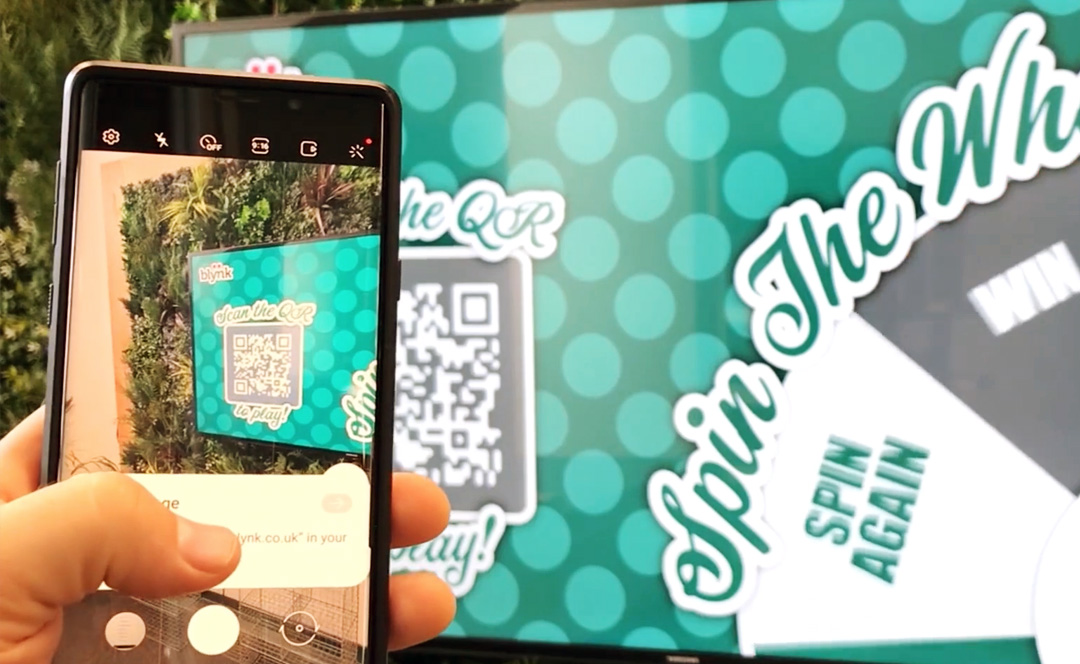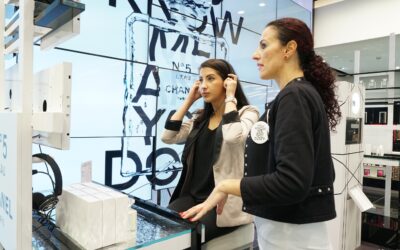The Coronavirus pandemic has changed the world. Facemasks, social distancing and singing ”Happy Birthday” to yourself whilst washing your hands are all now part of our everyday lives. Things that we used to take for granted, such as ordering our fast food via a touchscreen or pushing a button to find out more information, now feel like alien concepts (or at least make us think twice.) As ”non-essential” retail starts to open its doors to the public, how can they enable their customers to interact in-store digitally?
Stores will be able to use their existing technology ”as-is”, but customers may initially gravitate towards contactless experiences. The good news is that there are multiple solutions available. The key is ensuring that the right solution is being used by asking some initial questions…
What is the reason?
Is the goal to make the shopping experience easier for the customer? Or to engage and encourage them into the store? These are not mutually exclusive, but one of these should hold preference over the other.
What needs to be achieved?
Too often technology is used simply because it is cool. Technology should only ever be used because it is right to do so. The concept needs to be clearly defined before deciding what technology will be used to achieve it.
How should the customer interact?
Do you want the customer to interact actively, or do we want the interaction to be a natural part of their shopping experience, such as providing additional information as they approach a product?
Only once there are clear answers to the questions above should the attention turn to the best technology. Here at Blynk we believe that there are three primary solutions that are ideally suited to the post-COVID retail environment. Each has its own unique benefits, but most importantly, each offers the customer the benefit of a contactless experience.
Passive Sensors
Passive interaction is often overlooked as a solution. The major benefit is that the interaction happens automatically as a natural part of the customer’s shopping journey, and as a result, even the most technophobic of customers can interact. There are numerous sensor options out there, such as break-beams and motion sensors, but our recommendation is the proximity sensor. In its simplest form, a proximity sensor will detect a customer’s presence and react accordingly, but its uses can be far more intelligent. For example, by detecting the distance of the customer rather than just the presence, multiple trigger points can be detected throughout the customer’s journey:
| Distance | Content |
|---|---|
| Far Away/No person detected | Eye-catching and designed to be viewed at a distance |
| Mid Range | Some basic information and a prompt to come closer |
| Close | Detailed information |
Gesture Control
For a bit more interaction, gesture control is a perfect solution. This hand tracking technology recognises multiple common hand gestures, meaning that the customer can navigate through information or select a product by swiping their hand to the left or right. These gestures can also be combined to build a more complex interaction. By incorporating left, right, up, and down swipes with a forward gesture, almost any kind of content or menu can be navigated. That said, experiences should not be more complicated than they need to be. The most successful interactive installations are often the simple ones, so if the content can be navigated using just left and right gestures, why overcomplicate it?
Contactless Control
The Blynk Contactless Control system takes the humble QR code and turns it into an immersive and engaging contactless experience. QR codes have been around for over 25 years, but it feels like it is only now that we are truly embracing them. When the first lockdown was eased in June 2020, QR codes sprung up everywhere, with pubs, bars and restaurants seeing them as the perfect way of providing contactless menus and an easy way of contact tracing. The Blynk Contactless Control system take the QR code to a new level. QR codes can be read on any modern camera phone and used to integrate the customers own device into the Contactless Control System. Here they can assess additional information, control what they video plays in-store, play games, enter competitions, or interact with the surroundings.
Contactless Control can accommodate multiple simultaneous interactions, which means multi-user content can be developed. The solution is cloud-based, and there are no geographic limitations, which means that a customer could create a piece of artwork with another customer from the other side of the world. The possibilities are endless. If you wanted to discuss any of the solutions mentioned here, get in touch.




